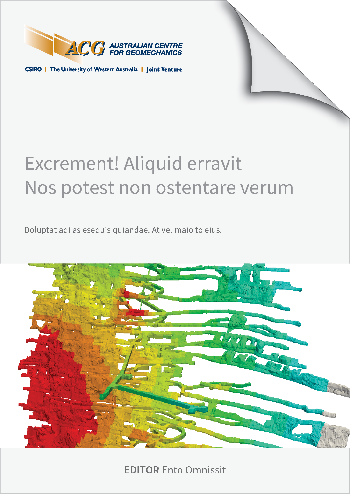Methodological proposal for the evaluation of strategic growth pathways for mining projects

|
Authors: Alarcón, C |
DOI https://doi.org/10.36487/ACG_repo/2435_H-02
Cite As:
Alarcón, C 2024, 'Methodological proposal for the evaluation of strategic growth pathways for mining projects', in Daniel Johansson & Håkan Schunnesson (eds), MassMin 2024: Proceedings of the International Conference & Exhibition on Mass Mining, Luleå University of Technology, Luleå, pp. 1082-1094, https://doi.org/10.36487/ACG_repo/2435_H-02
Abstract:
In 2022, Client Company (CC) independently conducted FEL1 studies for their Mining District Group 1 and Mining District Group 2, where various growth options were analyzed and the best alternatives for project sequencing were selected. In 2023, as part of the FEL-2A engineering study, CC needs to reevaluate its growth routes, but now in an integrated manner, considering the projects in both Mining District Groups together, to obtain a route that represents the best overall strategy for the Company, which does not necessarily correspond to the sum of the best local strategies. The methodology proposed in this article for the evaluation of growth paths considers six fundamental stages. Stage 1 considers the update of the engineering of each field, passing the results through Tradeoff analysis of exploitation method and financial evaluations prior to the simulations. Stage 2 consists of preparing the necessary inputs for the operation of the SIMPLAN simulation tool, including the results of stage 1, plant process interaction criteria for each scenario, OpEx and CapEx scaling, among others. With this, it is possible to perform the simulation model in SIMPLAN (stage 3), validating the results with the evaluations obtained in previous stages, and generating more than one thousand combinations of possible integrated production scenarios of the Mining District Groups. Then, in stage 4, the results are analyzed in PowerBi, generating a financial evaluation dashboard that is complemented with the non-financial evaluation of the routes; leading to stage 5, where each route is compared according to its Attractiveness vs Doability, which is how attractive it is from a financial point of view and how feasible it is from an environmental point of view, based on classifications of KPIs defined with the client. This analysis is complemented with the comparison of the simulated routes by means of a discounted NPV vs. CapEx graph, to discard scenarios that reduce the value of the integrated routes by adding mines to the analysis, ending with stage 6, in which the relevant recommendations are made for the client's growth routes.
© Copyright 2025, Australian Centre for Geomechanics (ACG), The University of Western Australia. All rights reserved.
View copyright/legal information
Please direct any queries or error reports to repository-acg@uwa.edu.au
View copyright/legal information
Please direct any queries or error reports to repository-acg@uwa.edu.au